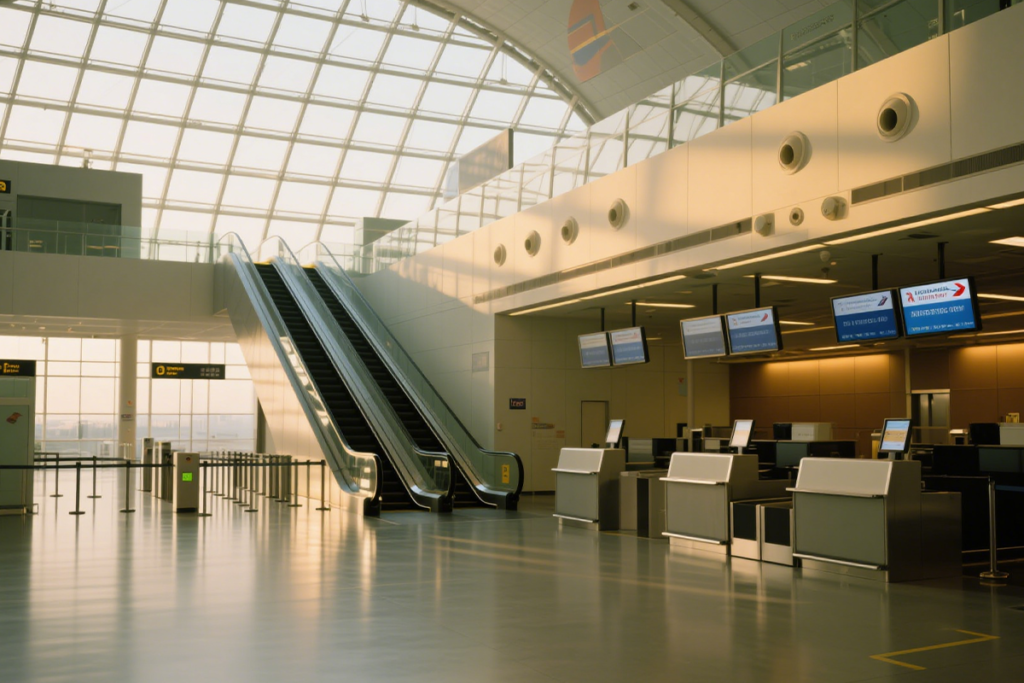
Public transportation is not just about movement it’s about experience. As millions of people pass through airports, metro stations, and other transit hubs every day, brands and city authorities are discovering that scent can play a surprisingly powerful role in shaping perception, reducing stress, and improving overall comfort.
From Tokyo to Paris, and Dubai to Seoul, ambient scenting is quietly transforming how passengers feel as they move through busy, high-traffic environments. Let’s explore how scent marketing is being used in public transport — and what it means for the future of urban wellbeing.
Why Scenting Matters in Transit Environments
Commuting is often associated with stress, crowds, and sensory overload. The air quality in enclosed transport hubs can also fluctuate due to ventilation, humidity, and high foot traffic.
Strategically diffused scent can help to:
- Reduce anxiety and tension among passengers
- Neutralize unpleasant odors from crowds or ventilation systems
- Promote alertness and comfort, improving how people perceive their travel environment
- Enhance brand identity for airports or metro networks seeking to project a sense of care, cleanliness, or innovation
This is not about strong perfumes or intrusive smells — it’s about subtle, consistent ambient scenting that makes a space feel more human and welcoming.
Real Cases from Around the World
1. Tokyo Metro (Japan) – Reducing Commuter Stress
Tokyo Metro was one of the first major transit systems to test ambient scenting on platforms and ticket halls. Light citrus and green tea notes were introduced to reduce anxiety and refresh passengers during peak hours. The result? Surveys showed a notable improvement in mood and comfort perception, especially among regular commuters.
2. Dubai International Airport (UAE) – A Sense of Calm and Luxury
Dubai’s airport, one of the busiest in the world, uses tailored fragrance systems in lounges, terminals, and VIP areas. The scent blends mild amber and oud accords, creating a signature experience aligned with Dubai’s image of hospitality and sophistication. It also helps passengers associate the airport with comfort and calm, even during long layovers.
3. Paris Charles de Gaulle (France) – Branding through Scent
At Paris CDG, ambient scenting was introduced as part of a broader sensory design strategy. Lounges, check-in areas, and corridors are infused with a light floral-musk fragrance designed to evoke “Parisian elegance.” This subtle branding creates emotional continuity — a signature that passengers remember long after they leave the terminal.
4. Seoul Metro (South Korea) – Clean Air and Modernity
In several stations of Seoul Metro, scent diffusion systems now combine odor-neutralizing technology with refreshing marine and citrus notes. This approach doesn’t just add fragrance — it actively purifies the air, reinforcing a sense of hygiene and innovation, particularly after the pandemic.
5. Singapore Changi Airport (Singapore) – Emotional Connection
Singapore’s Changi Airport is known for its nature-inspired design and sensory balance. Its ambient scent — a gentle floral-green accord — is dispersed throughout terminals to create emotional consistency. Passengers have come to recognize the “Changi scent”, which subtly strengthens the airport’s global identity as a relaxing and beautiful place to travel through.
The Science Behind the Scent
Research shows that the olfactory system is directly linked to the brain’s limbic system, which governs memory and emotion. A calming or pleasant scent can therefore lower stress levels, increase satisfaction, and even influence behavior, such as spending more time in a space or perceiving it as cleaner and safer.
For transport operators, this means scenting is not merely aesthetic — it’s a psychological and operational tool. A calmer, happier commuter environment can translate into fewer complaints, better flow, and higher passenger loyalty.
Challenges and Considerations
While scenting public transport spaces is promising, it requires:
- Precise calibration: the scent must be subtle and evenly diffused.
- Ventilation compatibility: systems should integrate with existing HVAC infrastructure.
- Cultural sensitivity: scent preferences vary globally — what feels refreshing in Tokyo might feel heavy in Dubai.
- Sustainability: using IFRA-certified, hypoallergenic ingredients ensures safety and compliance in public spaces.
That’s why projects of this scale require professional partners like SCENTPRO, experienced in delivering large-scale scenting solutions tailored to the unique dynamics of public areas.
The Future of Transit Scenting
As cities grow smarter and more people spend time in shared environments, the role of scent in public infrastructure will continue to expand. We can expect:
- Data-driven scent diffusion linked to occupancy and air quality sensors
- Branded scent identities for entire transport networks
- Integration of scent with lighting and sound for complete multisensory design
Ultimately, public transport will no longer be just functional — it will be emotionally intelligent.
SCENTPRO’s Vision
At SCENTPRO, we believe every environment — from a luxury boutique to a bustling airport — can benefit from scent-driven emotional design.
Our mission is to help businesses and public institutions create spaces that people remember, not just pass through.
Whether it’s a metro station, airport lounge, or corporate terminal, the right scent can transform the way people feel, move, and connect.
Contact us to learn more about large-scale scenting systems for public and commercial spaces.
📩 info@scentpro.az
🌐 www.scentpro.az